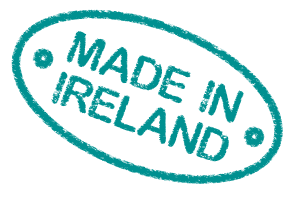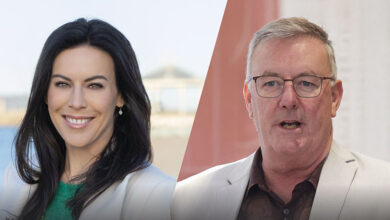Made in Ireland
 Europe remains Ireland’s majority market for exports but emerging economies are also growing in importance.
Europe remains Ireland’s majority market for exports but emerging economies are also growing in importance.
The value of Irish goods exports (€92 billion in 2011) is at near-record levels: a peak of €93.7 billion occurred in 2002 after 12 years of growth on the back of foreign direct investment. Goods exports fell by €2.8 billion in one year between 2007 and 2008 but then saw consecutive recoveries.
Just under half of last year’s agricultural exports (46.8 per cent) went to the UK, while the main customers for industrial goods were the rest of the EU (42.4 per cent) and the rest of the world (44.4 per cent).
62.3 per cent of all goods exports went to the rest of Europe. Despite being our closest neighbour, Northern Ireland only had a 1.6 per cent share. The Great Britain market (14.2 per cent) held up well over the recession but goods exports to the other EU member states have fallen from 45 per cent in 2009 to 42.2 per cent in 2011.
Asia-Pacific’s proportion also went down, from 8.8 to 7.9 per cent. In the same period, exports to the North American Free Trade Association area rose from 22.8 per cent to 24.8 per cent. The rest of the world increased from 3.3 to 4.2 per cent.
Chemicals and related products dominate Irish exports, rising from €52.2 billion in 2010 to €56 billion last year. In 2011, €26.4 billion were from medical and pharmaceutical products and €19.8 billion from organic chemicals. Food and live animals generated €7.85 billion and office machines (i.e. mainly computers) accounted for €4.08 billion.
Ireland’s largest export markets in Europe were Belgium (€13.5 billion), Britain (€13.1 billion), Germany (€6.54 billion), France (€5.02 billion), Switzerland (€3.69 billion), the Netherlands (€3.19 billion), Spain (€3.15 billion) and Italy (€3.09 billion).
The Central Statistics Office (CSO) definition of Europe extends to Turkey and all the countries of the former Soviet Union. While trade with western and central Europe is steady and well-established, market conditions in the east are volatile but mainly on the upward path.
Irish trade with Russia, for example, increased by 36.7 per cent between 2010 and 2011 and now stands at €509.8 million. Turkey added another €38 million, rising to €467.7 million, a larger share than many richer European neighbours.
Not surprisingly, trade with the USA accounts for the vast majority of trade with North America. Exports rose from €20.8 billion in 2010 to €21.4 billion in 2011. Canada (€628 million) is a significant but distant relation. Mexico, rather than Brazil, is the leader in Central and South America: an export market worth €526.7 million last year.
Saudi Arabia, meanwhile, had a roughly similar share in the Middle East (€528 million), followed by Israel (€492.8 million) and the United Arab Emirates (€307.7 million).
Japan is still Ireland’s most important single Asia-Pacific market (€1.78 billion), although China moves ahead (reaching €2.49 billion) when Hong Kong is included in its figures. Major customers also include Australia (€725.6 million), Singapore (€589.8 million), neighbouring Malaysia (€481.1 million), South Korea (€360.1 million) and Taiwan (€200.6 million).
The term BRIC was technically expanded to include South Africa (therefore BRICS) in December 2010 but its GDP is only a quarter of that of India, the next largest country in the group. The Ireland-South Africa export stream (€322.7 million), though, is currently more valuable than that for Ireland-India (€216.7 million). Nigeria is the second largest African market, on €290.7 million.
Separately, service exports from Ireland increased from €67.1 billion in 2009 to €72.8 billion in 2010, when figures were last recorded. The latter figure includes €28.2 billion from computer services and €50 billion of transactions in Europe: a 67.7 per cent share. The UK was the most important national market with 19.5 per cent.
Goods trade statistics are based on data provided by the Revenue Commissioners whereas service export figures are compiled from surveys conducted by the CSO and the Central Bank of Ireland, and from other administrative sources.





